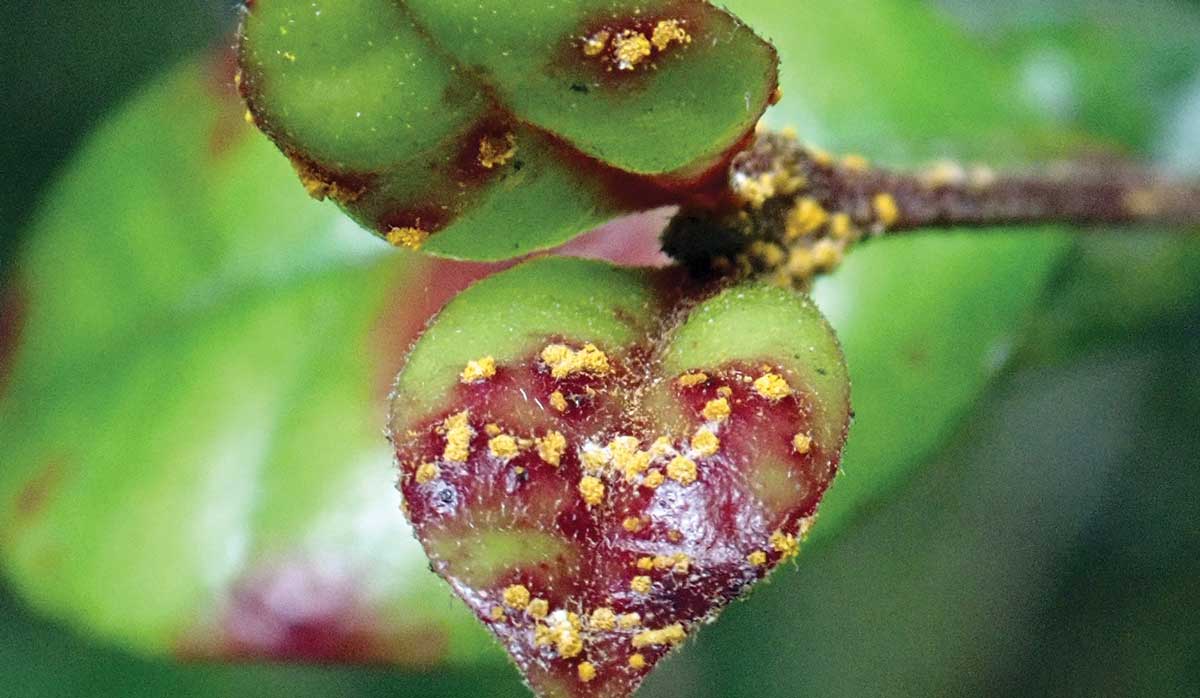Biosecurity NZ urges vigilance for yellow-legged hornets
Biosecurity New Zealand says Kiwis should continue to keep an eye out for yellow-legged hornets (Vespa velutina) over the holiday season.
Protecting Aotearoa from aerial invaders
In New Zealand, we take great care to understand and protect our primary industries from biosecurity incursions through rigorous border control procedures and strict import health standards. But what about the things we can’t control? Some recent arrivals impacting our primary industries and native estate include myrtle rust and fall army worm. These two pests most likely arrived via the aerial pathway, something we are just starting to understand and investigate.
New Zealand Winegrowers (NZW) is involved in Scion’s latest research programme, Protecting Aotearoa from Aerial Invaders in a Changing Climate, as part of the Programme Advisory Committee (PAC). Scion is a Crown Research Institute specialising in research, science and technology development for the timber industry. Although Scion’s primary focus is on the timber industry, this research will assist all primary sector producers, including viticulture, that could be affected by a pest or disease introduced to New Zealand via the aerial pathway.
Entomologists and atmospheric scientists are collaborating with industry partners, iwi, Taranaki Regional Council, and local community initiatives on the five-year research programme, funded by the Ministry of Business, Innovation and Employment Endeavour Fund. The research aims to strengthen New Zealand’s biosecurity and develop a warning system to help us predict when meteorological conditions are likely to deliver insects and pathogens to our shores, spread by the wind.
Ultimately, a new warning system – the Aerobiological Surveillance and Prediction System (ASaP) – will be developed. The warning system will help predict when organisms may arrive and if they are a threat, and it will flag locations for surveillance before insects and/or pathogens can become established.
The program will tackle aerial biosecurity threats by updating wind trajectory models, studying the origins and changes of ‘airbridges,’ understanding how insects and microbes move from airbridges to the ground, and researching their survival in extreme atmospheric conditions during long-distance travel.
 |
|---|
|
Myrtle rust on Ramarama – image credit; Wikimedia Commons |
An airbridge is like a natural highway in the sky that allows insects and pathogens to travel from one continent or island to another. Wind and weather patterns create updrafts into these invisible paths, helping organisms move across large distances. Noticeable and colourful Australian pest insects such as butterflies and moths have regularly been recorded in New Zealand, often clustered on the west coast following northwesterly winds.
Currently, there is a critical gap in biosecurity defences that allow insects and pathogens to reach New Zealand via an airbridge and spread until our surveillance systems detect them. This problem could worsen with the changing climate. A warming planet significantly increases jet stream instability, as seen in storm frequency, intensity, and severe turbulence.
The team estimates that preventing the establishment of just one serious pest could contribute NZ$0.125 - $1.25billion through avoided losses in primary sectors such as viticulture, horticulture, and forestry. There is also a real threat to our biodiversity, native vegetation, and forests, which could impact carbon sequestration.
Throughout the research programme, monitoring of atmospheric transport via airbridges, quantifying how insects and pests move between the Earth’s surface and upper atmosphere, atmospheric survival data, and a case study in Taranaki will inform the development of the ASaP tool.
The project’s learnings will also be shared with tamariki in the Taranaki region through a community outreach and educational project being co-designed with iwi.
Scion’s project partners are the University of Canterbury, NIWA, Virgina Tech, Taranaki Mounga Project, Taranaki Regional Council, Maanaki Whenua, AgResearch, and Plant & Food Research. Alongside MBIE, Te Uru Kahika – Regional and Unitary Councils Aotearoa – and The Foundation for Arable Research contribute funding.
Jim Herdman is NZW Biosecurity Advisor. This piece was written with support from Vanessa McWilliams, Science Communications Advisor at Scion.

The end of the year is fast approaching, so here are some thoughts on a few of the significant developments…

OPINION: When I moved to Marlborough two decades ago, I found countless lines of tidy vines, neatly mowed and carefully…
The large 2025 harvest will exacerbate the wine industry's "lingering" supply from recent vintages, New Zealand Winegrowers Chief Executive Philip…
If you find a new consumer in a developed wine market, you are taking them from someone else, says Blank…
OPINION: Sauvignon Blanc was famously introduced to New Zealand by Ross Spence of Matua Valley, and then serendipitously planted in…